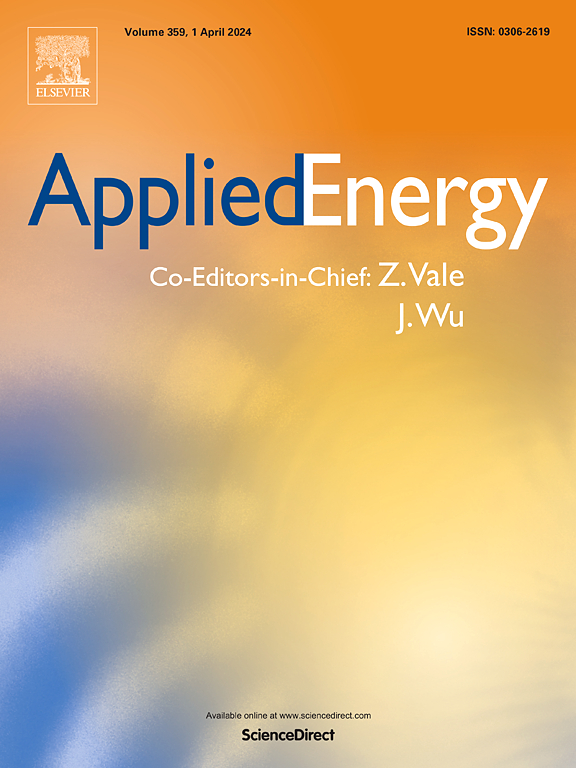Techno-economic and environmental optimization of agrivoltaics: A case study of Cornell University
IF 10.1
1区 工程技术
Q1 ENERGY & FUELS
引用次数: 0
Abstract
Agrivoltaic (AgV) co-locates crops and solar panels to mitigate land-use conflicts from rising production demands. This study advances AgV research by optimizing system efficiency through specific objective ratios for cost and environmental impact. Four models are developed to assess optimal AgV site design and benefits: two mixed-integer nonlinear programs (MINLP) that independently target economic gains and operational emission reductions, and two fractional programming (FP) models that evaluate economic and environmental benefits per water consumed, with varying minimum cropland constraints. Applied to agricultural and solar sites at Cornell University, Ithaca, New York, across seven crop types, optimal results from the MINLP models indicate that land should prioritize solar panels due to their superior economic and environmental benefits, with cabbage being the only exception due to its high crop value. In the FP models, prioritizing solar installation minimizes irrigation requirements, but economic benefits increase as more land is allocated to crops; a 90 % cropland allocation yields the highest revenues, ranging from 10.78 % to 186.77 % (US$5.86–34.88/m3) and achieving a land equivalent ratio of 4.40. The FP environmental model suggests limiting cropland to below 60 % for optimal emission reductions, reducing emissions to 54.01–112.18 metric tons of CO2eq/m3, which is lower than emissions from conventional separate crop and solar systems. The FP models balance economic and environmental benefits per irrigation unit, demonstrating AgV's water-use efficiency, and linking the complex relationship between inputs and outputs. Ultimately, site design choices should align with decision-makers' goals, whether prioritizing economic, environmental, or balanced system efficiencies.
求助全文
约1分钟内获得全文
求助全文
来源期刊

Applied Energy
工程技术-工程:化工
CiteScore
21.20
自引率
10.70%
发文量
1830
审稿时长
41 days
期刊介绍:
Applied Energy serves as a platform for sharing innovations, research, development, and demonstrations in energy conversion, conservation, and sustainable energy systems. The journal covers topics such as optimal energy resource use, environmental pollutant mitigation, and energy process analysis. It welcomes original papers, review articles, technical notes, and letters to the editor. Authors are encouraged to submit manuscripts that bridge the gap between research, development, and implementation. The journal addresses a wide spectrum of topics, including fossil and renewable energy technologies, energy economics, and environmental impacts. Applied Energy also explores modeling and forecasting, conservation strategies, and the social and economic implications of energy policies, including climate change mitigation. It is complemented by the open-access journal Advances in Applied Energy.
 求助内容:
求助内容: 应助结果提醒方式:
应助结果提醒方式:


